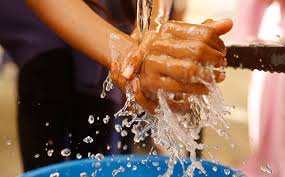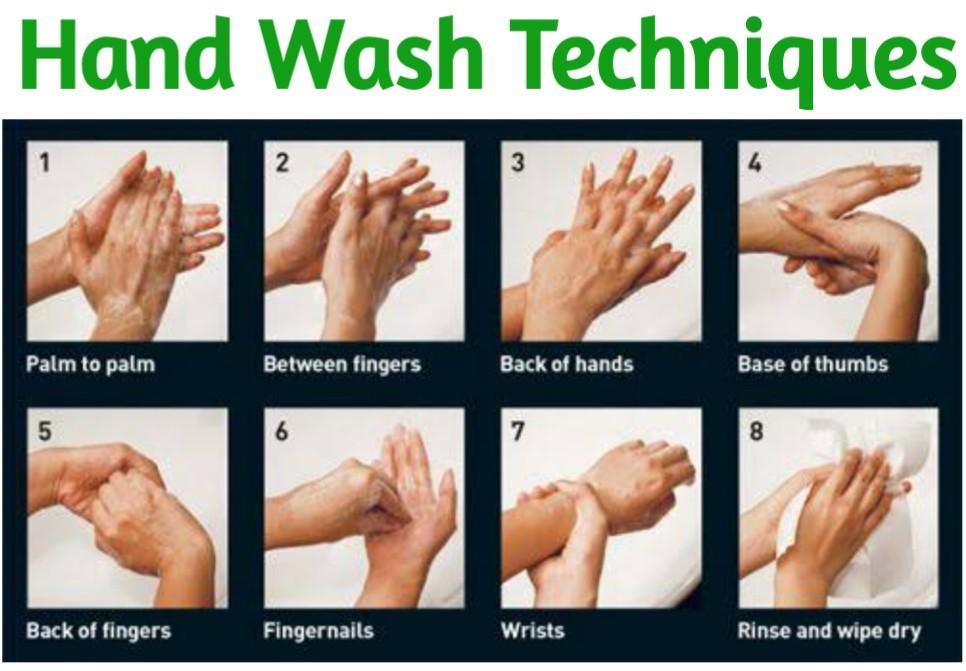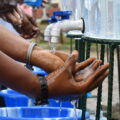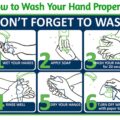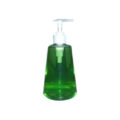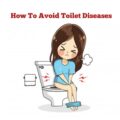Hand washing, also known as hand hygiene, is the act of cleaning one’s hands with soap and water to remove viruses/bacteria/microorganisms, dirt, grease, or other harmful and unwanted substances stuck to the hands. Drying of the washed hands is part of the process as wet and moist hands are more easily re-contaminated. Frequent hand-washing is one of the best ways to avoid getting sick and spreading illness. Hand washing is a hygienic practice that is critical in preventing spread and transmission of germs. It MUST be practiced regularly and systematically to cub infections in home-based communities, work-based communities, and hospital-based communities. In an era where flu, viral infections antimicrobial resistance superbugs are emerging, it is critical to monitor and maintain high-level standards of hygiene to cub the transmission cycles of diseases, thus preventing spread and infections.
Hand Washing Techniques
You can’t see them, but germs hang out on your hands 24/7. While most are harmless, others can cause serious infection like influenza. These germs can enter your body when your contaminated hands come into contact with your nose, mouth, eyes or open wounds. Thankfully, you can avoid an infection simply by washing your hands. Read on to find out how. Proper hand washing means washing your hands for at least 30 seconds with soap and water. The constant rubbing action helps soap break down the grease and dirt that carry most germs. This way, your hands don’t just smell fresh, but you’ll also reduce the germ count on your hands by up to 99%.
The 8 Proper Hand Washing Techniques
Following these 8 steps can help keep your hands clean:
- Palm to palm
- Between fingers
- Back of hands
- Base of thumbs
- Back of fingers
- Fingernails
- Wrists
- Rinse and wipe dry
hands whenever you do the following:
- Before and after
- Handling or preparing food
- Meals
- Attending to a child or sick person
- Wearing contact lenses
- After
- Using the toilet
- Wiping or blowing your nose
- Coughing and sneezing
- Changing diapers
- Touching common surfaces like lift buttons, handles and table tops
Use any temperature water
Research indicates that different temperature waters do not have a significantly different effect on the number of bacteria that hand washing removes. The thorough washing technique is what removes the bacteria. However, warm water can be more pleasant than cold water, especially when washing the hands for 20 seconds.
Use any type of soap
Plain soap and water are very effective at removing microbes from the skin. It does not matter what kind of soap a person uses. According to the Food and Drug Administration (FDA), there is not enough evidence to show that over-the-counter antibacterial soaps are any better at killing microbes than regular soaps.
Encourage children to wash their hands
It is important that children wash their hands regularly, especially after playing outdoors, touching pets, using the toilet, and at other key times.
Adults should show children how to wash their hands correctly and encourage them to sing “Happy Birthday” twice to ensure they clean their hands for an adequate length of time.
Take care when drying the hands
Microbes transfer more easily to and from wet hands, so individuals should always dry their hands after they wash them.
How a person dries their hands also matters. Research indicates that both hot air hand dryers and cloth roller towels are less hygienic than disposable paper towels.
Hot air hand dryers, for example, can cause particles and microorganisms to disperse into the air. These microorganisms then contaminate the environment.
As an alternative to disposable paper towels, an individual can use a dry hand towel that they regularly wash at 140oF. Individuals should not share this towel with others.
Combat dry skin with hand cream
If frequent washing causes dry or cracked skin, it can be helpful to use a moisturizing hand cream or lotion throughout the day. Cracked skin allows microbes to enter the body through the surface breaks more easily. If dry, chapped, or painful skin becomes a persistent problem, it can indicate that an individual is over washing their hands. They should discuss any concerns they have with a doctor.
When travelling overseas or going to places where clean water and soap are not available, try using hand sanitisers for an added hygiene boost after washing your hands with soap. The most common hand sanitisers are alcohol-based. The WHO recommended that when the germs are invisible, thorough hand-rubbing with handwashing sanitizers (containing at least 60% of alcohol) for about 20-30 seconds, fully rubbing the hand back and forth, the back of the hand, in between the finger and rubbing the fingers. This practice is applied majorly by hospital care and health workers. SEE: How to Make Liquid Hand Wash at Home and Commercially
How to Use Alcohol-Based Hand Sanitizers
Wash your hands with soap and water to make sure all dirt is removed. Alcohol-based sanitizers work best on clean skin.
Dry your hands after washing, as water dilutes the alcohol in the sanitizer and lessens its effectiveness.
Apply a coin-sized amount of sanitizer on your hands. Rub them together, ensuring that both hands are covered with sanitizer, including the area under your nails.
Keep going for about 15 to 20 seconds, or until your hands feel dry.
Your hands may be clean after washing with soap and water, but also take these precautions when drying them:
Avoid using sponges or non-disposable cleaning cloths to wipe your hands unless you clean them on a daily basis and dry them regularly. Remember, germs thrive on moist surfaces.
Do not use a common hand towel. Always use disposable towels and hand dryers in public washrooms.
Do not use a single damp cloth to wash a group of children’s hands. SEE: 10 Importance Of Hand Washing In Nigeria


